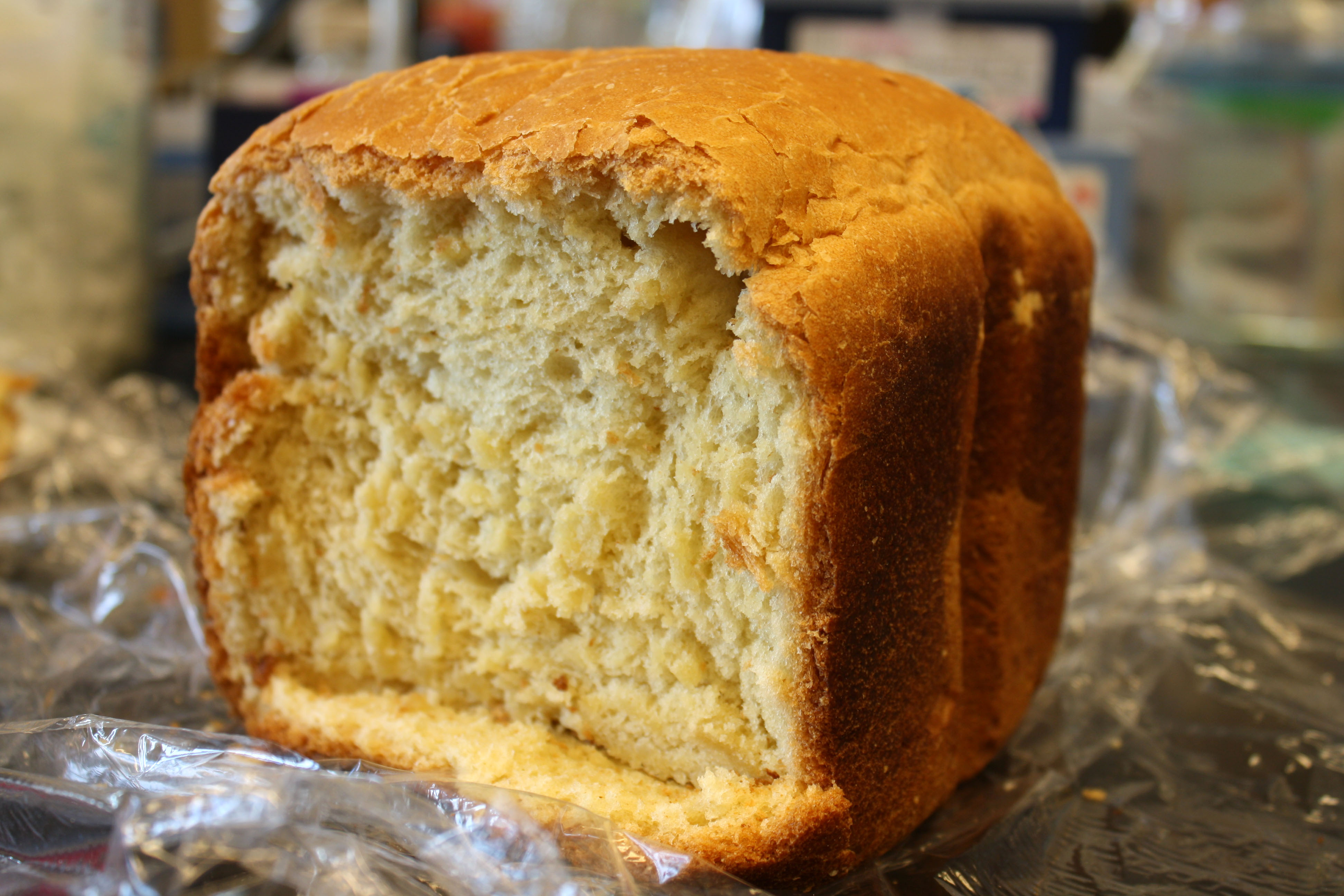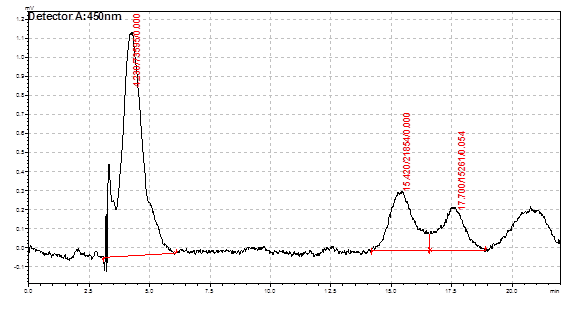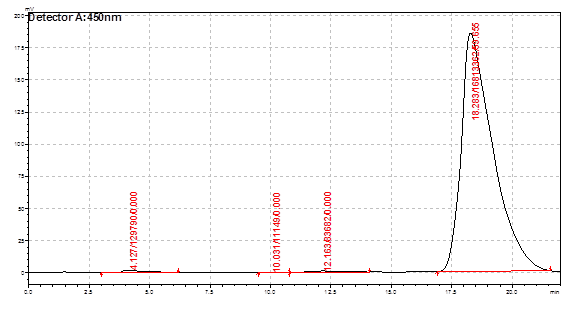Baking VitaBread
In order to determine whether VitaYeast is able to be utilized for the applications that we envisioned, we used it to bake bread and hope to see how vitamin-enriched our bread will be. We bought a bread machine from Amazon ([http://www.amazon.com/Sunbeam-5891-2-Pound-Programmable-Breadmaker/dp/B00067REBU/ref=sr_1_1?ie=UTF8&qid=1316727813&sr=8-1 here]) and placed it in the lab.
See the protocol for baking Vitabread here.
Benchmarking
In order to control the situation as much as possible, we used the same recipe (found [http://allrecipes.com/recipe/best-bread-machine-bread/detail.aspx here]) for all the trials and tried to match up the amount of yeast as best as we could. We assigned the height of the bread as a quantitative benchmark to see how VitaYeast fared in baking.
For baking bread, we used VitaYeast that only produced vitamin A, as it was the only one available at the time. From hereon, the term "VitaYeast" refers to this type of VitaYeast.
To determine how VitaYeast may differ from normal dry yeast in bread, we ran a trial where we baked a regular 1.5 pound loaf of bread using store-bought dry active yeast. The purpose of doing so is to determine that the bread machine is functional and to determine how tall a 1.5 pound loaf of bread is.
The first major question for us was if baking bread using Vitayeast, which is lab yeast, is feasible. The answer to this question was a resounding yes, as we found out during our first trial of baking with lab yeast. Since we established this, we moved onto other questions.
1. How does using dry yeast and lab yeast change the bread? (In this case, height) 2. What is the quantity of Vitamin A inside the bread?
In addition to the loaf of VitaYeast bread, we obtained wild-type yeast for the same strain as another benchmark for the VitaYeast. In addition to seeing how using lab yeast would affect the height of the bread, we also wanted to see how the using normal wild-type yeast to bake would compare to store-bought dry yeast. We also wanted to use the wild-type yeast to compare how much more Vitamin A the VitaYeast bread has.
Height Measurements
| Type of Yeast Used | Height (cm) |
| Active Dry Yeast | 16.5 |
| Vitamin A Yeast | 12.5 |
| WT Yeast | 11.5 |
Bread Baking
We determined the optical density (OD) of lab yeast required based on the amount in one packet of dry active yeast. (Described here.)
Both the WT yeast and Vitayeast resulted in successful bread! To make sure that our Vitabread will not be inflicted by the same problem as golden rice (i.e. orange bread), we sliced the VitaBread to see that there is no orange pigment in the bread.
Assessing VitaBread
To show that our VitaBread is a viable source of vitamins, we have quantified the amount of beta carotene in bread baked with beta carotene producing yeasts. We solubilized a known amount of bread with hexane, acetone, and ethanol, saponified it with methanol and potassium hydroxide, and then extracted the carotenoids with hexane and toluene. For comparison, we have also done an extraction on bread baked with wild type yeasts, and normal bread spiked with standard beta carotene during baking. A High Pressure Liquid Chromatography (HPLC) analysis was done on the extracts.
A beta carotene peak was observed for the VitaBread extract at 17.7 minutes, which is consistent with the peak from the standards. This peak is not seen in the extract from bread baked with wild type yeasts.
We will be optimizing the extraction process in order to have a more accurate measure of the amount of beta-carotene our bread contains. We will also gauge the extent of beta-carotene degradation during the baking process and in different storage conditions to complete our assessment of VitaBread.
 "
"







